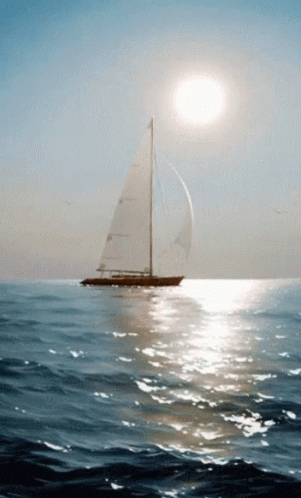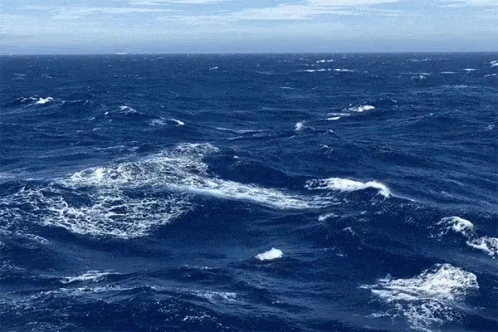Sailing the 7 Seas
But aren't there more than 7 seas? YES!
Lets first come to an agreement on how a "SEA" is defined. Keep in mind, not every region agrees what a "SEA" or a "Gulf" is but lets try to come to a consensus and also look at where the term "7 Seas" originated.

The most common definition of a "sea" is a large body of saltwater that is partially enclosed by land. Seas are generally smaller than oceans and are often connected to oceans. They can be partially or fully enclosed by land, and the term is commonly used to describe various large, interconnected, and navigable bodies of saltwater. Seas can vary widely in size, depth, and characteristics, and they play a crucial role in the Earth's climate, ecosystem, and maritime activities. The term "sea" is used globally, and different seas are named based on their geographical locations, such as the Mediterranean Sea, the Caribbean Sea, or the Baltic Sea.
Embarking on a journey across the vast expanse of our planet's waters has always been a romanticized notion, capturing the imaginations of sailors and adventurers alike. The phrase "Seven Seas" has been woven into the fabric of maritime folklore, and while it may sound poetic, its origins and meaning are far more concrete than one might think.

The term "Seven Seas" has evolved over time, with its roots tracing back to ancient civilizations. In various historical contexts, it referred to different bodies of water, often reflecting the geographical knowledge of the period. From the Mediterranean Sea to the Persian Gulf, the concept of the Seven Seas has encompassed different regions across the globe.

In medieval European literature, the Seven Seas were often mentioned as the Arctic, Antarctic, North Atlantic, South Atlantic, North Pacific, South Pacific, and the Indian Ocean. This representation reflected the limited understanding of the world's oceans during that era.
Today, the Seven Seas are more metaphorical than literal, symbolizing the interconnectedness of all the Earth's oceans. As we sail through the digital age, our awareness of the world's waters has expanded beyond ancient perceptions. The Seven Seas now represent a collective understanding of our planet's vast aquatic realms, uniting the Arctic, North Atlantic, South Atlantic, North Pacific, South Pacific, Indian Ocean, and the Southern Ocean.
The difference between a "Sea" and a "Gulf"
The terms "sea" and "gulf" refer to different types of bodies of water, and the main differences lie in their size, geography, and how they are connected to the larger bodies of water.

Size:
- Sea: Seas are generally larger bodies of saltwater compared to gulfs. They can be relatively large and are often connected to oceans. Seas can also be partially enclosed by land.
- Gulf: Gulfs are smaller and more narrowly shaped bodies of water. They are typically partially surrounded by land and may extend into a coastline.
Geography:
- Sea: Seas can be open or partially enclosed by land, and they are often found between continents or within large landmasses.
- Gulf: Gulfs are typically smaller in scale and are often found along coastlines, forming indents or recesses into the land.
Connection to Oceans:
- Sea: Seas are usually directly connected to oceans. They may have wide connections to oceans, allowing for the exchange of water and marine life.
- Gulf: Gulfs are often connected to oceans but have narrower entrances compared to seas.
Shape:
- Sea: Seas can have various shapes, and their coastlines may be more open or irregular.
- Gulf: Gulfs are often characterized by their narrow, elongated shapes, extending inland from the coastline.
Examples to illustrate the differences:
- Sea Example: Mediterranean Sea, Caribbean Sea.
- Gulf Example: Gulf of Mexico, Gulf of Aden.
While these distinctions provide a general guideline, it's important to note that the usage of these terms can vary based on regional and geographical conventions. In some cases, a body of water may be referred to as a sea in one region and a gulf in another.
As we marvel at the wonders of the Seven Seas, let's take a moment to appreciate the diversity of Earth's oceans. Here's a list of all the seas in the world, alphabetically:
Certainly! Here is an alphabetical list of bodies of water with the name "sea":
- Adriatic Sea
- Aegean Sea
- Alboran Sea
- Amundsen Sea
- Andaman Sea
- Arabian Sea
- Baffin Bay
- Balearic Sea
- Banda Sea
- Barents Sea
- Bay of Bengal
- Beaufort Sea
- Bering Sea
- Black Sea
- Caribbean Sea
- Caspian Sea
- Celebes Sea
- Ceram Sea
- Chukchi Sea
- Coral Sea
- East China Sea
- East Siberian Sea
- Flores Sea
- Greenland Sea
- Ionian Sea
- Irish Sea
- Japan Sea
- Java Sea
- Kara Sea
- Labrador Sea
- Laptev Sea
- Ligurian Sea
- Marmara Sea
- Mediterranean Sea
- Norwegian Sea
- Philippine Sea
- Red Sea
- Ross Sea
- Salton Sea
- Sargasso Sea
- Savu Sea
- Sea of Azov
- Sea of Cortez (Gulf of California)
- Sea of Crete
- Sea of Japan (East Sea)
- Sea of Marmara
- Sea of Okhotsk
- Sulu Sea
- Tasman Sea
- Timor Sea
- Tyrrhenian Sea
- White Sea
- Yellow Sea
This comprehensive list includes bodies of water with the name "sea" and is presented in alphabetical order. If you have any further requests or questions, feel free to let me know!

Posted Using InLeo Alpha